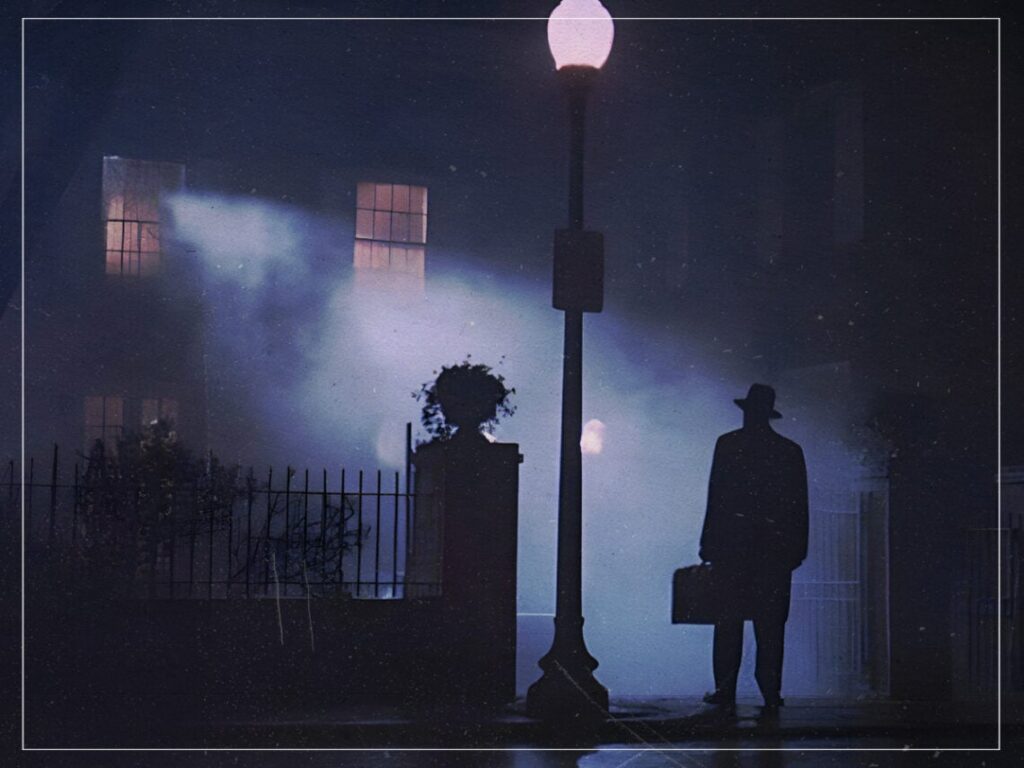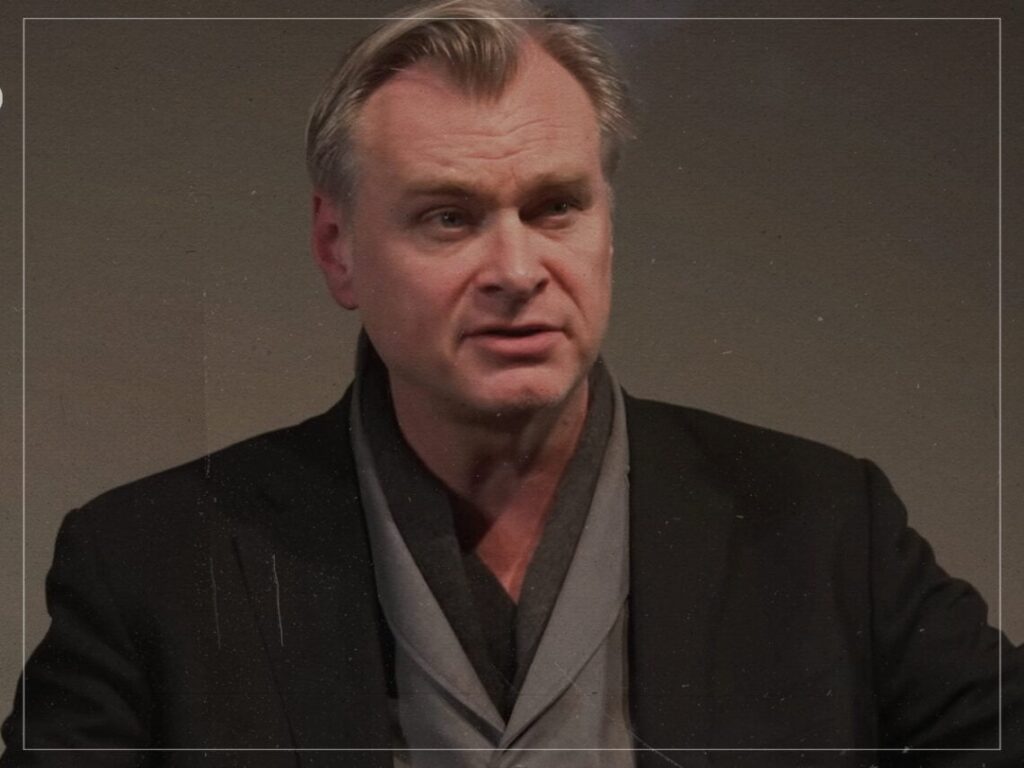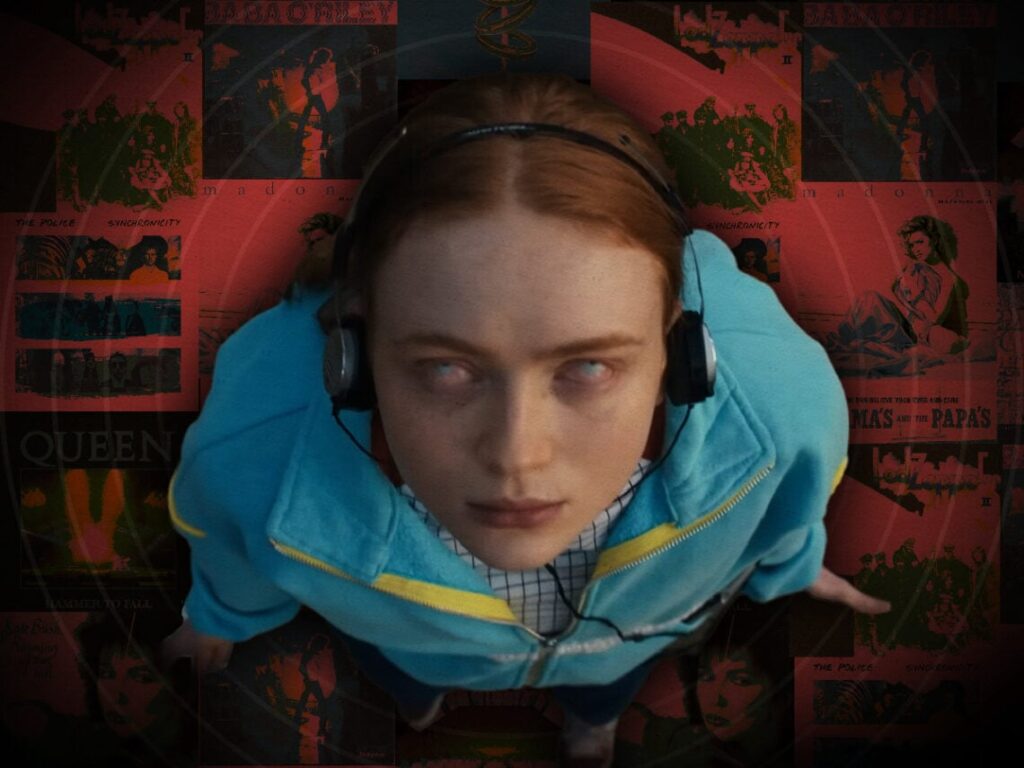The 10 best horror movies of the 1970s
 Posted On
Posted On
(Credits: Far Out / Warner Bros)
In the 1970s, the horror movie category kicked into gear, with several films being released that revolutionised and popularised the genre. Somewhat departing from the gothic roots of horror established in previous decades, filmmakers of the 1970s began to douse their horror works with more psychological and social considerations.
In addition, 1970s horror directors slowly began to abandon the studio sets and sterile production methods that had made a production company like Hammer Films a household name. Instead, they shot on location, lending new horror movies an air of grit and authenticity. This meant that the fear they instilled in an audience became more real and palpable.
Furthermore, rather than relying on classic monsters and characters like Dracula and Frankenstein, horror’s doors suddenly flung wide open. It seemed that no avenue of the darker recesses of the human imagination was off limits, and best of all, they could be depicted without having to break the bank.
With all that in mind, we’ve compiled a list of the greatest horror movies of the 1970s, showing the wide range of angles the genre covered in the decade. From claustrophobic explorations of space to camp and melodramatic revenge stories via sickening depictions of humiliation, torture, and supernatural nightmares, let’s momentarily revert back to the golden age of cinematic terror.
The best 1970s horror movies:
The Abominable Dr. Phibes (Robert Fuest, 1971)
We begin with something of a leftfield choice, a British classic by the name of The Abominable Dr. Phibes. Robert Fuest’s 1971 film combines a gothic sense of aesthetic grace with a macabre comedy element, and the results are magnificent. Vincent Price plays the titular lead role, a horrifically scarred car crash survivor who swears bloody revenge on those responsible for his wife’s death in surgery.
What earns Dr. Phibes its place on this list is its peculiar whimsical tone that taps into both horror and comedy and its stunning production value. Great effort went into creating the film’s art deco set, fabulous, lavish costumes and humorous props, while an air of thematic nuance comes with the methods of its protagonist’s murders, each inspired by the biblical plagues of Egypt. It is simply unique and absolutely unmissable.
[embedded content]
The Omen (Richard Donner, 1976)
The movie that put severe doubts into any new parents even remotely considering calling their son Damien, Richard Donner’s The Omen is an absolute classic of 1970s horror that taps into the fear of Satan himself. Masterfully fusing supernatural terror with psychological drama, the film tells of the Thorn family’s adoption of a baby boy, who turns out to be the Antichrist.
Starring Gregory Peck and Lee Remick as the parents and Harvey Spencer Stevens as Damien, The Omen’s brilliance primarily comes down to the way it instils horror in its audience without ever having to resort to gore, rather dousing the viewing experience in an atmosphere of suggestive dread. Considering the iconic ‘Ave Satani’ chant as part of Jerry Goldsmith’s Academy Award-winning score, and it’s easy to see why this exploration of sheer evil is so well acclaimed.
[embedded content]
The Exorcist (William Friedkin, 1973)
God bless the children who ever gazed up a screening of William Friedkin’s legendary horror movie The Exorcist after their bedtimes, and equally, God save the adults who braved its terrors when it first came out in the cinema. An absolute classic piece of horror cinema with some of the most iconic moments of the 1970s, Friedkin’s film was celebrated for its intense psychological torture and groundbreaking special effects.
Based on William Peter Blatty’s novel of the same name, The Exorcist tells of the demonic possession of a young girl and the mission of her mother to exorcise her with the help of two Catholic priests. To the sound of Mike Oldfield’s truly iconic ‘Tubular Bells’, dread stalks every moment of The Exorcist and moments in which Linda Blair’s Regan spins her head all the way around on its axis, backwards crab walks down the stairs, and shoves a crucifix up her you know what will always haunt our darkest nightmares.
[embedded content]
Alien (Ridley Scott, 1979)
Who’d have thought that the science fiction and horror movie genre would ever be such a match made in heaven (or hell, for that matter)? Well, doubts about this brilliant cinematic marriage were soon put to one side upon the release of Ridley Scott’s 1979 masterpiece Alien, undoubtedly one of the most tense and claustrophobic releases of the 1970s, if not of all time.
Written by Dan O’Bannon and based on art designs by H.R. Giger, Alien focuses on the crew of the space tug Nostromo, who are slowly hunted down by a seemingly invincible extra-terrestrial when investigating a strange distress signal on a distant moon. What’s best about Alien is the way it builds up its suspense slowly, keeping the alien antagonist out of sight in the shadows, while a brilliant performance from Sigourney Weaver as Ellen Ripley and some of the most extraordinary set designs ever witnessed adds to the incredible experience that lies within one of Scott’s best-ever efforts.
[embedded content]
The Texas Chainsaw Massacre (Tobe Hooper, 1974)
Independent cinema has often done well when it concerns the horror genre, and back in 1974, Tobe Hooper released a film that proved that a big budget was not necessary to make a brilliant and terrifying film. The Texas Chainsaw Massacre, made for just $140,000, possesses a real sense of raw and honest filmmaking that lends it a believable atmosphere of horror and tension.
Hooper’s film, which featured a cast of mostly unknown actors and used an almost-documentary style of shooting, focuses on a group of friends who are tortured and murdered by a family of deranged, cannibalistic psychopaths in rural Texas tortures. A horror movie is nothing without its antagonist, and The Texas Chainsaw Massacre has one of the most iconic in the shape of Leatherface, while genuinely disturbing scenes like the unforgettable family dinner make the 1974 classic one of the all-time horror greats.
[embedded content]
Halloween (John Carpenter, 1978)
Not only is Halloween one of the decade’s most influential horrors, but it also changed independent cinema. Shot on a budget of just $300,000 (about $1.4 million today), the film became incredibly successful, grossing $70m. At the time, the slasher genre was relatively new, but Halloween upped the ante by setting the story in a suburban neighbourhood, suggesting that absolutely no one watching the film was safe. The masked killer, Michael Myers, had no real motive, simply targeting the characters in the film without reason.
While Halloween might not be as frightening now as it was for contemporary viewers, its low-budget look still gives it a realistic sheen that makes you feel slightly dirty after watching it. The grainy, dark shots of Myers lurking around corners with his knife are unforgettable, and even the opening scene’s POV shot, revealing a younger version of Myers to have just killed his sister, remains one of horror’s most iconic moments.
[embedded content]
The Wicker Man (Robin Hardy, 1973)
Folk horror is a terrific subgenre that has seen somewhat of a revival in recent years with movies like The Witch and Midsommar, but none would exist without The Wicker Man. Directed by Robin Hardy, the movie is a compelling tale of religious devotion, cults and betrayal. We follow a police officer, played by Edward Woodward, who travels to a small island off the coast of Scotland to investigate a missing child. Yet, upon his arrival, he discovers no record of the girl, with residents denying her existence.
He soon realises that the community he has entered is like nothing he’s seen before. People dance around naked and practise Pagan rituals, frightening the sexually-uptight and incredibly Christian character. As strange events continue to take place, we realise that Woodward’s Howie is trapped, surrounded by people who have ulterior motives in mind. The Wicker Man is a masterpiece, with an incredible soundtrack and perfect performances from Woodward and Christopher Lee.
[embedded content]
Suspiria (Dario Argento, 1977)
Bathed in neon hues and soundtracked by prog rockers Goblin, Dario Argento’s Suspiria is a feast for the senses, enticing us into an electrifying world of supernatural happenings. The film begins with Suzy Bannion, portrayed by Jessica Harper, arriving at her new ballet school in Berlin late at night, having flown from America. Battling the rain, she attempts to enter the building, only to be mysteriously turned away. From here, the murders begin, with one of the students getting brutally killed by a gloved figure.
Suspiria features some gross imagery, such as maggots raining down through the cracks in the ceiling, a dog mauling a man to death, and someone struggling through a pit of barbed wire. Only Argento could shoot these scenes with such an eye for aesthetics, and even when the blood is so clearly fake, you can’t help but feel scared regardless due to the unnerving atmosphere created throughout.
[embedded content]
Salo, or the 120 Days of Sodom (Pier Paolo Pasolini, 1975)
Salo, or the 120 Days of Sodom isn’t the most typical horror movie on this list – there are no supernatural beings or crazed serial killers on the loose. Instead, the antagonists are the entitled libertines who round up a bunch of teenagers and strip them naked, only to relentlessly torture them and kill anyone who tries to rebel. Created as an analogy for fascism, totalitarianism and capitalism, Salo is hard viewing, but it is truly horrifying.
Pasolini doesn’t allow viewers a break from watching truly stomach-curdling scenes, such as the teenagers being force-fed shit or the final act of torture, where eyes are pulled out, tongues are ripped off, and some are even hanged. Salo remains one of the most controversial movies ever made, yet it is hard to deny its iconic place in the horror canon.
[embedded content]
Black Christmas (Bob Clark, 1974)
Black Christmas is one of the first proper slashers, emerging during the same year as The Texas Chainsaw Massacre. Set in a sorority house, the unsuspecting college students find themselves facing the wrath of a masked killer who leaves disturbing messages on the phone and physically stalks them. The film isn’t as often talked about as much as other slashers of the era, like Halloween, but it is one of the most influential, heavily inspiring John Carpenter to make his iconic horror four years later.
The fact that Black Christmas is set during the festive period, a time when we’re meant to feel excited and jolly, puts a bleak spin on your typical Xmas movie. That’s what makes it so brilliant – it’s a chilling look at the realities of crime, which won’t stop just because Christmas is around the corner. It’s a timeless slasher that still holds up as a great piece of horror, and without it, who knows what the genre would look like today.
[embedded content]


